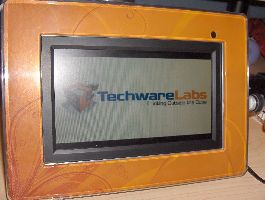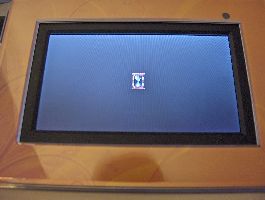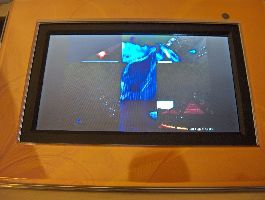|
CenOmax 7" Digital Photo Frame

Testing:
CenOmax believes that their product is easy to use. "Just take pictures, Insert, and view." So we decided to see just how "easy" it really is to use their 7" digital picture frame. For testing purposing we used a 2GB SanDisk SD card and the 32GB Corsair Survivor flash drive. Upon turning on the device, the CenOmax logo appears for about 10 seconds while the system loads. It then begins to go into a breakdown of all the frames' functions. An easy way to skip this process is by hitting the menu button on the remote. If the screen remains inactive for more than 5 seconds, it will then begin running a replay of all of the frames' features. I found this to be somewhat annoying when trying learn the menu screen. Also, the main image has a very poor resolution. Lets start off by loading images from the 2GB SanDisk SD card:
2GB SanDisk SD Card:
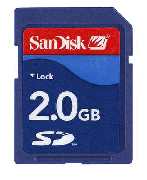
First, if you put in a storage device and nothing happens, hit the source button on the remote control to have the device search for your pictures. Upon loading the SD Card into the card reader it took around one minute to load. I took out the SD Card and re-inserted it to test the consistency of the load time. It took roughly two minutes to load the second testing, and 10 to 15 seconds to load the third time. So needless to say, there is no exact time frame that it takes for the pictures to load. After the pictures load, the words "SD/MMC" appear on the bottom of the screen. Once any form of storage has been recognized by the frame, text will appear on the bottom of the LCD screen. By pressing the select button on the remote control the picture slide show begins. If you find that some of the edges of your pictures are cut off, go to settings and make sure the view mode is set to normal screen and not wide. You should be able to view all pictures, no matter what the size. If any of the pictures were taken vertically, a black box appears on both sides, allowing the picture to maintain its proper proportions.
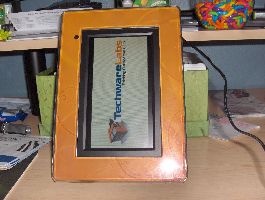 |
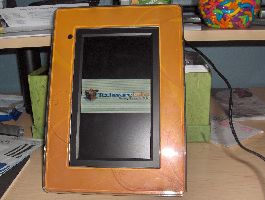 |
|
Horizontal setting |
Go back to main menu to restart, or hit rotate on remote control |
Vertical Setting |
*Note: If the picture does not change from horizontal to vertical after you move the frame to sit vertically, go back to the main menu and start the slide show over again or click rotate on remote control. It should now be the correct direction for the way in which the frame is sitting.
32GB Corsair Survivor Flash Drive:
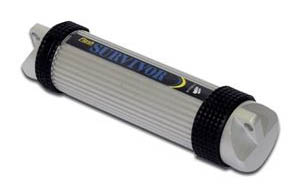
The same process was conducted when testing the Corsair Survivor Flash Drive. The drive was inserted and the pictures were loaded in 34 seconds. The flash drive was then taken out and re-inserted to test for consistency. During the second testing it took 45 seconds for the pictures to load, and 30 seconds to load the third time. The same conclusions were drawn regarding the consistency of load time for the Corsair Survivor Flash Drive. That conclusion being that there is no consistency in load time and there is no way to tell which method of storage will produce a faster load time. When testing the video playback feature, I found that the video would load within 30 to 35 seconds, however, the digital frame had to buffer numerous times because it did not have enough required memory to play the entire video at once. An hourglass appeared multiple times during the video and then the loading process would then start over.
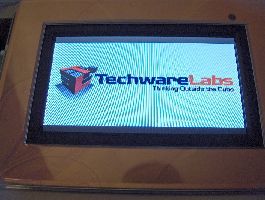 |
|
Hour Glass which buffers video |
TechwareLabs |
Results:
I found that both the Corsair Survivor drive, as well as the SanDisk SD card produced the same quality in images, and both had varying load times with little to no consistency. The main problem that I found with both methods of storage is that during the slide show, the images do not smoothly transition from one to the next. The images load in pieces, allowing two to three different images to be on the same screen at the same time, creating a very poor transition.
REALTIME PRICING






